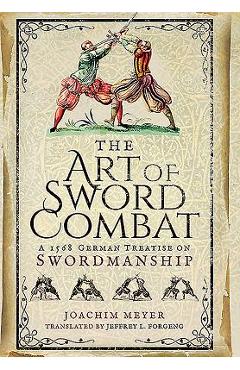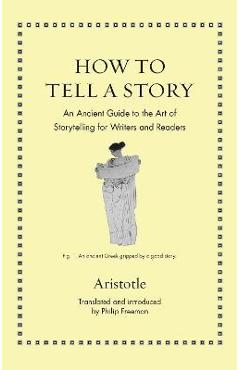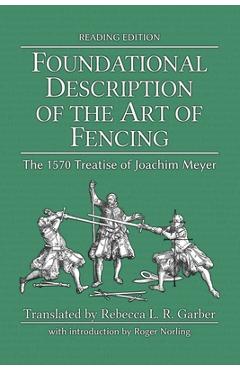The Art of Sword Combat: A 1568 German Treatise on Swordmanship - Joachim Meyer

Detalii The Art of Sword Combat:
libris.ro
195.02 Lei
216.69 Lei
Sports & Recreation
Joachim Meyer
The Art of Sword Combat: - Disponibil la libris.ro
Pe YEO găsești The Art of Sword Combat: de la Joachim Meyer, în categoria Sports & Recreation.
Indiferent de nevoile tale, The Art of Sword Combat: A 1568 German Treatise on Swordmanship - Joachim Meyer din categoria Sports & Recreation îți poate aduce un echilibru perfect între calitate și preț, cu avantaje practice și moderne.
Caracteristici și Avantaje ale produsului The Art of Sword Combat:
- Departament: sport-activitati-aer-liber
- Perfect pentru activități sportive și de aventură în aer liber.
Preț: 195.02 Lei
Caracteristicile produsului The Art of Sword Combat:
- Brand: Joachim Meyer
- Categoria: Sports & Recreation
- Magazin: libris.ro
- Ultima actualizare: 08-04-2025 01:30:25
Comandă The Art of Sword Combat: Online, Simplu și Rapid
Prin intermediul platformei YEO, poți comanda The Art of Sword Combat: de la libris.ro rapid și în siguranță. Bucură-te de o experiență de cumpărături online optimizată și descoperă cele mai bune oferte actualizate constant.
Descriere magazin:
Following the success of Jeffrey L. Forgeng\'s translation of Joachim Meyer\'s The Art of Sword Combat the author was alerted to an earlier recension of the work which was discovered in Lund University Library in Sweden. The manuscript, produced in Strassburg around 1568, is illustrated with thirty watercolor images and seven ink diagrams. The text covers combat with the long sword (hand-and-a-half sword), dusack (a one-handed practice weapon comparable to a saber), and rapier. The manuscript\'s theoretical discussion of guards is one of the most critical passages to understanding this key feature of the historical practice, not just in relation to Meyer but in relation to the medieval combat systems in general. The manuscript offers an extensive repertoire of training drills for both the dusack and the rapier, a feature largely lacking in treatises of the period as a whole but critical to modern reconstructions of the practice. The translation also includes a biography of Meyer, much of which has only recently come to light, as well as technical terminology, and other essential information for understanding and contextualizing the work.

Produse asemănătoare

The Art of Metal: Five Decades of Heavy Metal Album Covers, Posters, T-Shirts, and More - Martin Popoff
![]() libris.ro
libris.ro
Actualizat in 28/10/2025
271.76 Lei

The Art of Swordsmanship by Hans Lecküchner - Jeffrey L. Forgeng
![]() libris.ro
libris.ro
Actualizat in 28/10/2025
357.72 Lei

How to Tell a Story: An Ancient Guide to the Art of Storytelling for Writers and Readers - Aristotle
![]() libris.ro
libris.ro
Actualizat in 28/10/2025
105.74 Lei

How to Tell a Joke: An Ancient Guide to the Art of Humor - Marcus Tullius Cicero
![]() libris.ro
libris.ro
Actualizat in 28/10/2025
103.97 Lei

Real Love: The Art of Mindful Connection - Sharon Salzberg
![]() libris.ro
libris.ro
Actualizat in 28/10/2025
105.97 Lei

Post-Traumatic Thriving: The Art, Science, & Stories of Resilience - Randall Bell
![]() libris.ro
libris.ro
Actualizat in 28/10/2025
111.32 Lei
Produse marca Joachim Meyer

Foundational Description of the Art of Fencing: The 1570 Treatise of Joachim Meyer (Reading Edition) - Joachim Meyer
![]() libris.ro
libris.ro
Actualizat in 28/10/2025
223.13 Lei

Foundational Description of the Art of Fencing: The 1570 Treatise of Joachim Meyer (Reading Edition) - Joachim Meyer
![]() libris.ro
libris.ro
Actualizat in 28/10/2025
334.73 Lei

The Art of Sword Combat: A 1568 German Treatise on Swordmanship - Joachim Meyer
![]() libris.ro
libris.ro
Actualizat in 08/04/2025
195.02 Lei